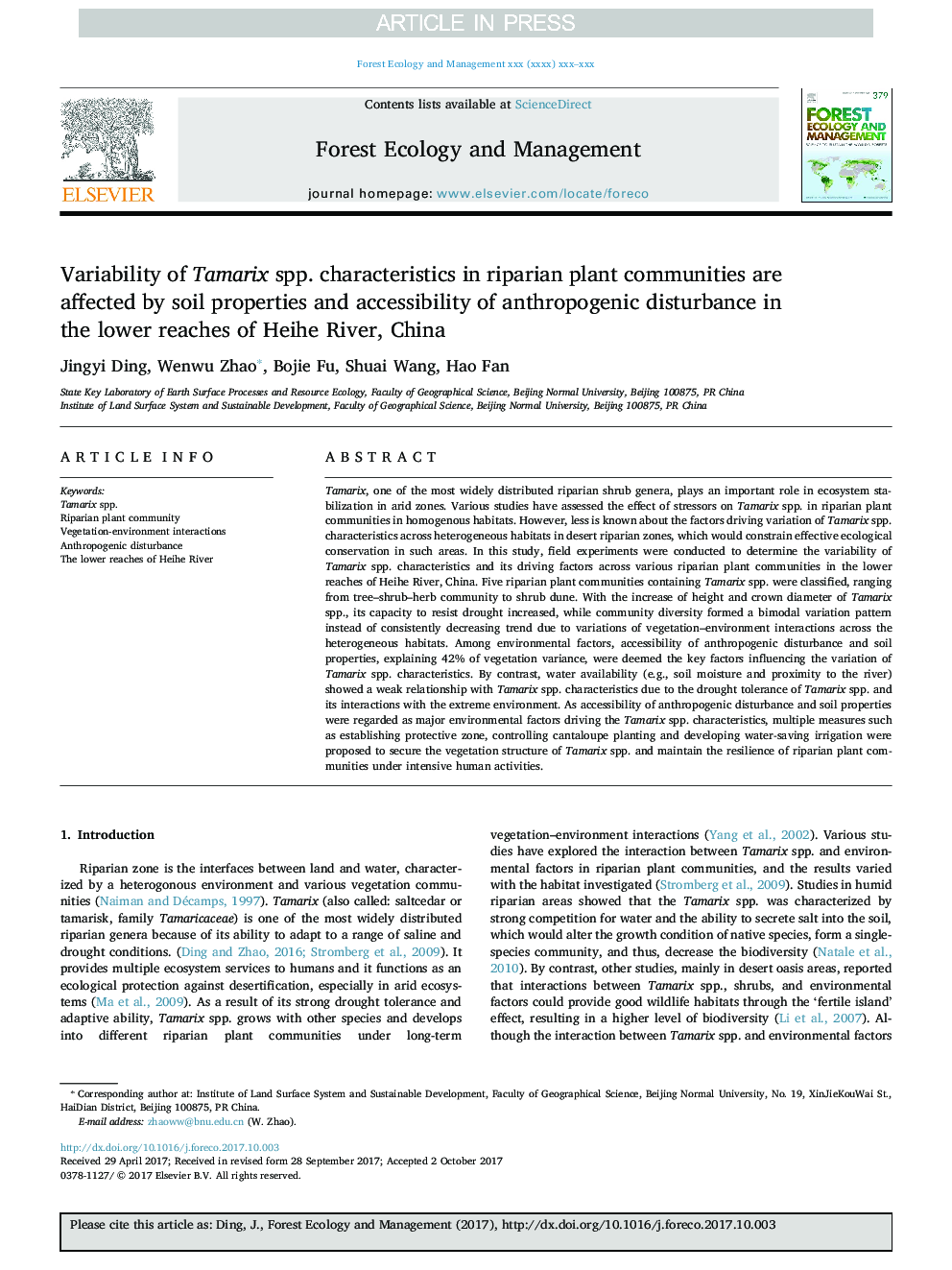| Article ID | Journal | Published Year | Pages | File Type |
|---|---|---|---|---|
| 6541841 | Forest Ecology and Management | 2018 | 13 Pages |
Abstract
Tamarix, one of the most widely distributed riparian shrub genera, plays an important role in ecosystem stabilization in arid zones. Various studies have assessed the effect of stressors on Tamarix spp. in riparian plant communities in homogenous habitats. However, less is known about the factors driving variation of Tamarix spp. characteristics across heterogeneous habitats in desert riparian zones, which would constrain effective ecological conservation in such areas. In this study, field experiments were conducted to determine the variability of Tamarix spp. characteristics and its driving factors across various riparian plant communities in the lower reaches of Heihe River, China. Five riparian plant communities containing Tamarix spp. were classified, ranging from tree-shrub-herb community to shrub dune. With the increase of height and crown diameter of Tamarix spp., its capacity to resist drought increased, while community diversity formed a bimodal variation pattern instead of consistently decreasing trend due to variations of vegetation-environment interactions across the heterogeneous habitats. Among environmental factors, accessibility of anthropogenic disturbance and soil properties, explaining 42% of vegetation variance, were deemed the key factors influencing the variation of Tamarix spp. characteristics. By contrast, water availability (e.g., soil moisture and proximity to the river) showed a weak relationship with Tamarix spp. characteristics due to the drought tolerance of Tamarix spp. and its interactions with the extreme environment. As accessibility of anthropogenic disturbance and soil properties were regarded as major environmental factors driving the Tamarix spp. characteristics, multiple measures such as establishing protective zone, controlling cantaloupe planting and developing water-saving irrigation were proposed to secure the vegetation structure of Tamarix spp. and maintain the resilience of riparian plant communities under intensive human activities.
Related Topics
Life Sciences
Agricultural and Biological Sciences
Ecology, Evolution, Behavior and Systematics
Authors
Jingyi Ding, Wenwu Zhao, Bojie Fu, Shuai Wang, Hao Fan,
